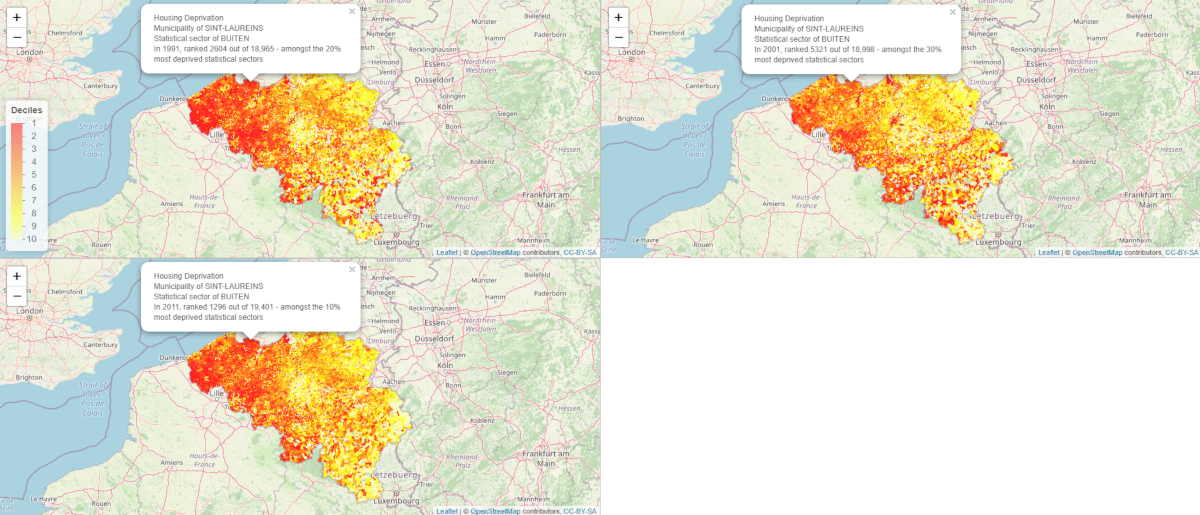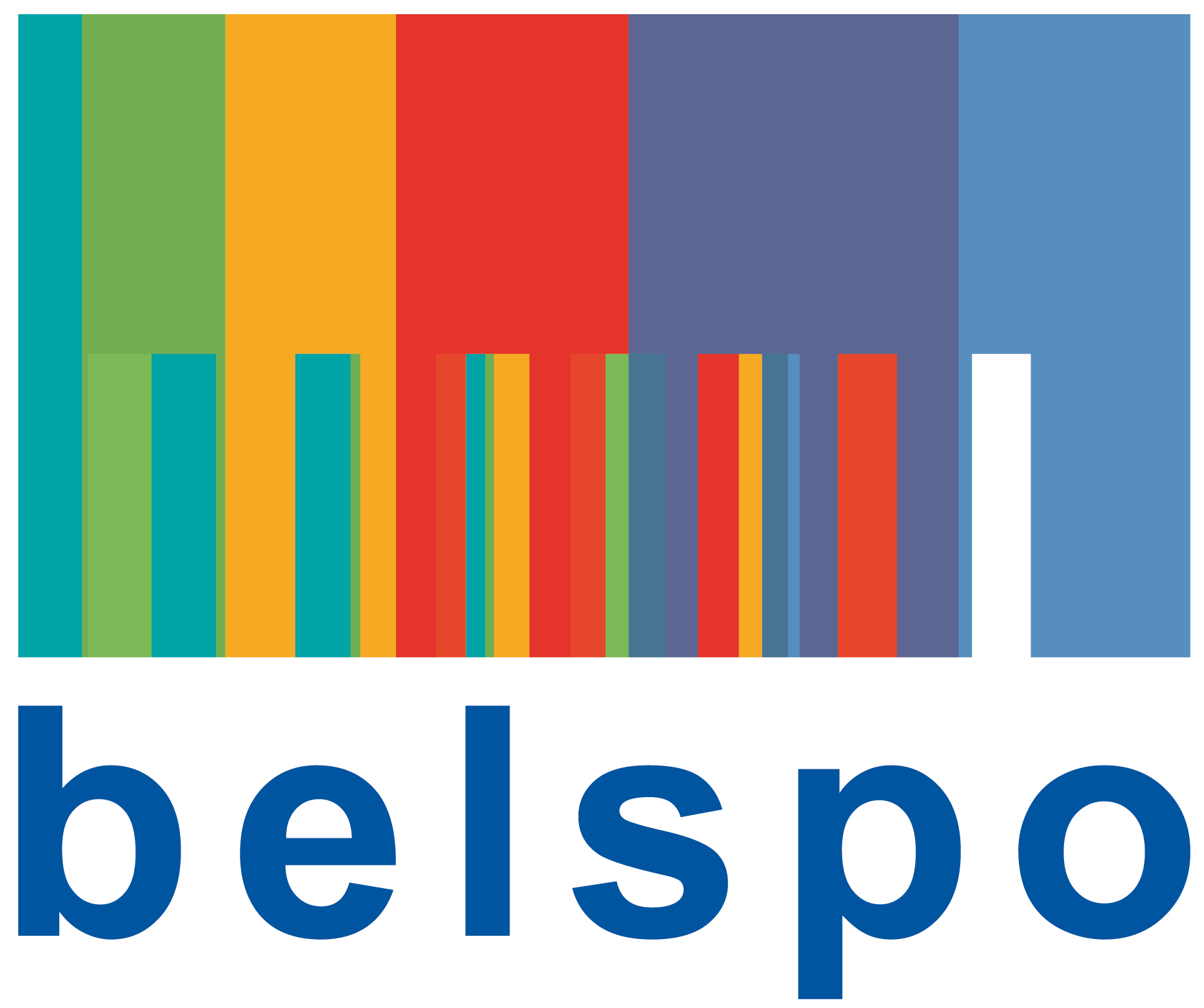Why do we need an index of multiple deprivation?
In demographic research, education, occupation or income are the most commonly used proxies for measuring a socioeconomic deprivation. Their use has strong limitations and often leads to inconsistent results. Above all, the simple measures of SE deprivation do not take into account the multidimensionality of deprivation, but only offer a narrow perspective.
An index of mutiple deprivation (IMD) is multidimensional, offering broader view than that gained by education, occupation or income alone. It highlights the social aspects of deprivation that are relevant for health care planning and resources allocation. Being multidimensional, an IMD is based on multiple indicators, organized across multiple domains of deprivation which are weighted and combined to create the overall IMD. This relative measure of deprivation is computed for small administrative unit areas, in Belgium the statistical sector. Each statistical sector is then ranked from the most to the least deprived according to its level of deprivation relative to that of other statistical sectors.
Development of the Belgian Index of Multiple Deprivation (BIMD)
We propose a measure of a relative deprivation, the Belgian Index of Multiple Deprivation (BIMD) replicable for years 1991, 2001, and 2011. The index follows a well-established methodological framework, which encompasses a wide range of living conditions, closely linked to poverty. Its development also builds on exploratory work conducted within our group. Our ecological deprivation index is essentially developed from census data, which include numerous variables reflecting socioeconomic position with regard to the surrounding population. Their selection is based on the premises that deprivation refers to unmet needs, which are caused by a lack of access to resources, not only the material ones (housing, employment, etc.) but also the social (rights associated with employment, personal safety, or healthcare).
How can the BIMD be used?
The BIMD measures relative deprivation, so a statistical sector ranked 500th is more deprived than a statistical sector ranked 1000th, but it does not mean it is twice as deprived. Although the index does not measure the absolute level of deprivation in statistical sectors over time and cannot be used to identify real change over time, it allows to explore changes in the pattern of deprivation between the versions of the indices.
From a pragmatic point of view, the BIMD can be used for different purposes. In ecological epidemiological studies, the BIMD can be used for showing the spatial distribution of deprivation, giving an overview of the situation for decision makers, or identifying particularly extreme areas where a public action needs to be taken. Evidence-based health policies require reliable and accurate measures, and it has been shown that indices of multiple deprivation can be a relevant tool.



